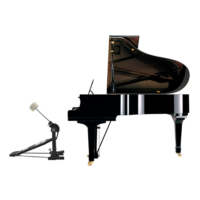The ideal of classical music recordings is ‘realism.’ Music on classical recordings aims to capture an acoustic authenticity, often recorded with a ‘neutral’ microphone positioned at a suitable distance, simulating the ambiance of a concert hall with the listener in the sweet spot. At the same time this approach embraces the potential of retakes and technological adjustments, enabling musicians to achieve a level of control and equality that may otherwise be unattainable. Consequently, classical recordings frequently prioritize precision, clarity, and a degree of neutrality in the interpretation to ensure the reproducibility of the performance (Blier-Carruthers, 2020).
High-level classical concerts often mirror recorded performances in various ways. They are typically presented in a straightforward manner, focusing predominantly on the auditory experience as if nothing else matters. Concerts strive for flawless execution, reminiscent of the retake technology employed in recordings, and interpretations often adhere closely to ‘benchmark’ recordings (Cook, 2014).
However, there’s an opportunity to diverge from this standard and explore the unique qualities of each medium. Live concerts can be transformed into dynamic, immersive experiences through daring interpretations, innovative staging, or engagement with the audience.
Conversely, recordings can capitalize on the advantages of technology and studio production to create immersive listening experiences that surpass live performances. Techniques such as spatialization, interpretation amplification, or the incorporation of digital effects can elevate recordings into standalone art forms, distinct from the live concert experience.
